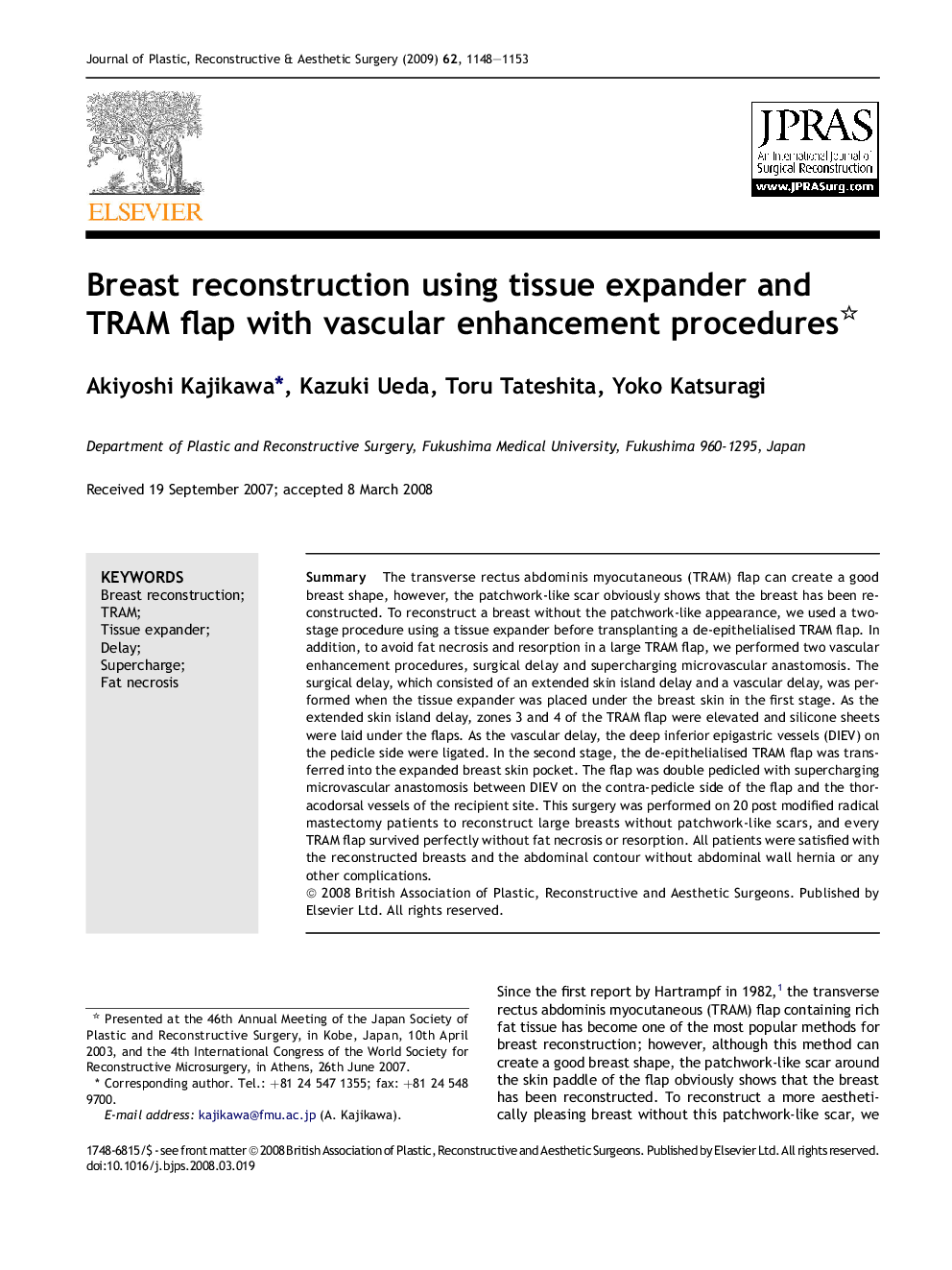| Article ID | Journal | Published Year | Pages | File Type |
|---|---|---|---|---|
| 4120262 | Journal of Plastic, Reconstructive & Aesthetic Surgery | 2009 | 6 Pages |
SummaryThe transverse rectus abdominis myocutaneous (TRAM) flap can create a good breast shape, however, the patchwork-like scar obviously shows that the breast has been reconstructed. To reconstruct a breast without the patchwork-like appearance, we used a two-stage procedure using a tissue expander before transplanting a de-epithelialised TRAM flap. In addition, to avoid fat necrosis and resorption in a large TRAM flap, we performed two vascular enhancement procedures, surgical delay and supercharging microvascular anastomosis. The surgical delay, which consisted of an extended skin island delay and a vascular delay, was performed when the tissue expander was placed under the breast skin in the first stage. As the extended skin island delay, zones 3 and 4 of the TRAM flap were elevated and silicone sheets were laid under the flaps. As the vascular delay, the deep inferior epigastric vessels (DIEV) on the pedicle side were ligated. In the second stage, the de-epithelialised TRAM flap was transferred into the expanded breast skin pocket. The flap was double pedicled with supercharging microvascular anastomosis between DIEV on the contra-pedicle side of the flap and the thoracodorsal vessels of the recipient site. This surgery was performed on 20 post modified radical mastectomy patients to reconstruct large breasts without patchwork-like scars, and every TRAM flap survived perfectly without fat necrosis or resorption. All patients were satisfied with the reconstructed breasts and the abdominal contour without abdominal wall hernia or any other complications.
